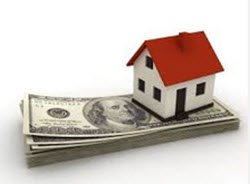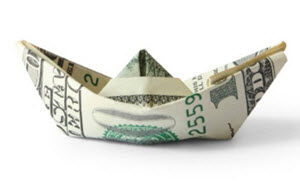Borrow your down payment
The down payment part of buying a home can usually not be covered by the normal home mortgage. When house and condo prices are high, down payments can reach substantial amounts, and it might be difficult for the prospective home owner to find enough cash in his or her savings account to cover the full down payment. In such situations, a separate loan for the down payment can be required to close the deal.
If you only need to borrow a small amount of money you might be able to use a personal unsecured loan to quickly get the money. You might also be able to put it on your credit card.
 Down payment loan from the mortgage company
Down payment loan from the mortgage company
Sometimes, the same lender that approves your mortgage loan will also approve a down payment loan. The mortgage loan will typically be an unsecured loan (the home will not be collateral). Since this means a higher risk for the lender, you can expect a higher interest rate and a shorter loan period than for your mortgage loan.
If your home increases in value over time, you may be able to negotiate a new deal with the lender, where your old mortgage loan and the unsecured down payment loan are lumped together and turned into a new mortgage loan, with a lower interest rate and a longer loan period than the unsecured down payment loan had.
Down payment loan from another lender than the mortgage company
Sometimes, you can find better offers for a down payment loan by shopping around than by asking the mortgage company to provide your with a down payment loan. Use a loan website to compare different loans and find the cheapest one. It is important that you always choose a website that focus on your local market.
The FHA program
In the United States, the Federal Housing Administration (FHA) is a program launched during the Great Depression of the 1930s. Today, one of the features of this program is to help potential home owners that can not afford a conventional down payment.
The FHA does not issue loan, but they do insure loans issued by FHA-approved lenders. This decreases the risk for the lender. You can find more information about FHA at the U.S. Department of Housing and Urban Development.
Through FHA, a first time home buyer can put down as little as 3.5% in down payment. Also, the buyer can receive up to 6% towards closing costs.
Down payment grants
 If you live in the United States, and you income is low or moderate, you may be eligible for down payment assistance. Most of these grants are only available for first-time home buyers.
If you live in the United States, and you income is low or moderate, you may be eligible for down payment assistance. Most of these grants are only available for first-time home buyers.
Some down payment assistance programs are funded by the federal government (example: American Dream Down Payment Initiative) while others are funded by states or other local authorities. This means that you need to look for what’s available in your specific area.
Seller-funded down payment assistance programs (DPA programs)
Seller-funded down payment assistance programs used to be quite common in the United States, but in 2006 the Internal Revenue Service ruled that certain non-profit seller-funded down payment assistance programs were not considered charitable organizations. The following year, the Department of Housing and Urban Development adopted new regulations to ban seller-funded down payment programs. This meant that organizations providing seller-funded DPA programs could no longer provide grants on FHA loans.
